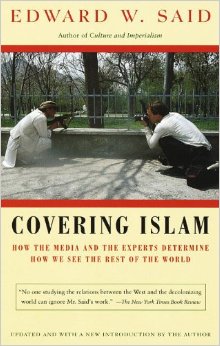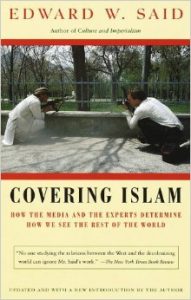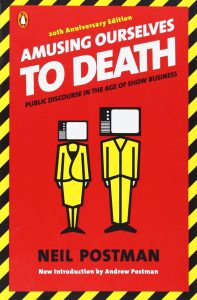In Covering Islam, Edward Said examined the role of American media in portraying the Islamic world as a “hostile” environment. Americans viewed “the faith and culture of Muslims as a threat” and “associated them with terrorism, violence and fundamentalism” (xxi). Culture influenced academic studies. American journalists did not understand the language of the area and relied on biased academic studies for their understanding of the Islamic world. Said also examined the “American experts” on the Islamic world and America’s response to its geopolitical and economic interests.
Near the end of the eighteenth century, two views of thought existed about the world. Orientalist thought “divided the world into two unequal parts, the larger one called the Orient and the other, also known as Occident or the West” (4). Many believed “Islam was a demonic religion” (5). Christianity served as the dominant religion in the West. Islam, however, became more of an “energetic version of Christianity in the East” (5).
In the 1970s, Western and “American responses to the Islamic world became relevant, troubled and problematic” (l). Issues, such as the “shortage of energy supply, Arab and Persian Gulf oil, OPEC, the dislocating effects on Western societies of inflation, the Iranian revolution and the hostage crisis created problems for American society” (l). Americans associated higher cost of “imported oil with a cluster of unpleasant things: American dependence on foreign oil and communication from the Middle East and the Persian Gulf to Americans that energy was no longer ours” (36). Americans began to designate Islam as the “number one enemy of the American way of life” (40).
Representation of Islam showed reporters “unwillingness to report political processes, an imposition of patterns and values that are ethnocentric, an avoidance of detail and an absence of genuine perspective” (44). “All of this can be traced to how Islam was reflected and served in Western media” (44). These “interpretations of Islam” led to a series of consequences. Americans received their “news about Islam through television and radio networks, the daily newspapers, the mass-circulation of news magazines and films” (47). Thus, the “mass media reflected powerful interests of society” (47). Journalists, news agencies and networks decided on what was to be portrayed and how it was portrayed” (50).
In A Test of the News, Walter Lippmann and Charles Merz used the New York Times to study the objectivity of news in coverage of the 1917 Russian Revolution. Newspapers discussed Russia’s military strength on the eastern front. The battles, however, proved Russia’s “strength to be false” (161). The Times relied on the “official purveyors of information. They indicated opinion, they were controlled by special purpose and they were not trustworthy news” (171). The Times also “did not take seriously the equipment of the correspondent” (172). The Russian policy of the editors of the Times influenced their news columns. Thus, according to Said, American media corporations “serve and promote —America and even the West— they all have the same central consensus in mind” (52). News organizations, such as CBS, Time, the New York Times and the Associated Press, reached the most people. “These corporations furnish the basis for what participating newspapers, local television stations and radio stations distribute to their immediate clientele” (54). Thus, as a consequence, Americans received a “scant opportunity to view the Islamic world except reductively and coercively” (66). The “Princess Episode” justified the idea that the American media system shaped the way journalists reported and portrayed Islam and the Arab society (69).
In November 1979, Iranians took over the American embassy in Tehran and Iranian students held Americans hostage. “Iran took up much of the nightly network news immediately after the embassy was seized” (82). Iranian officials “indicated it was their plan to use the media to turn the American people against the policy of their government” (83). The Iran crisis represented “American relations with the Muslim world” (83). The media coverage of the crisis shaped Americans’ attitudes toward Islam. Media outlets, such as ABC, CBS and the New York Times, provided Americans with misleading information and images. American journalists lacked many opportunities to provide balanced media coverage of the Iran crisis and Islam.
Academics in the United States, public policy and legislation played a role in understanding Islam and the Middle East. “Knowledge and coverage of the Islamic world are defined in the United States by geopolitics and economic interests on — for the individual — an impossibly massive scale, aided and abetted by a structure of knowledge production that is almost as vast and unmanageable” (154). As academics and politics in America shaped the “orthodox coverage” of Islam, Said believed in the idea of “antithetical knowledge” (157). Antithetical knowledge referred to “academics and experts who wrote in opposition to the prevalent orthodoxy” (157). “Producers of the antithetical view consisted of young scholars in Islamic studies, older scholars in Islamic studies and writers, activists and intellectuals unaccredited in Islamic studies” (158). According to Said, despite their lack of expert certification, the writers, activists and intellectuals group understood “certain dynamics within the postcolonial world and hence within large portions of the Islamic world” (160). They looked beyond the attitudes of the media and the government. “They actively sought out knowledge” (160). Thus, facts “get their importance from what is made of them in interpretation” (163).



